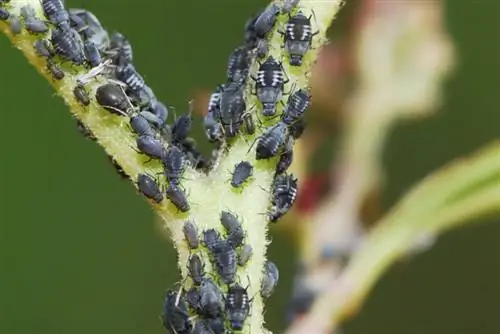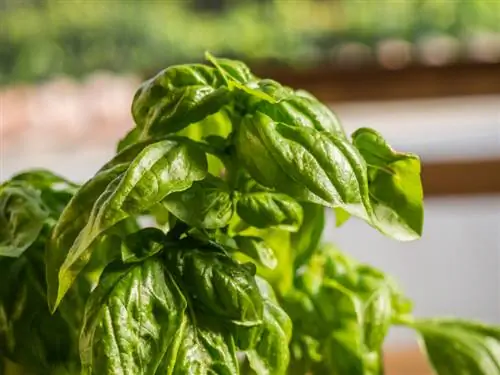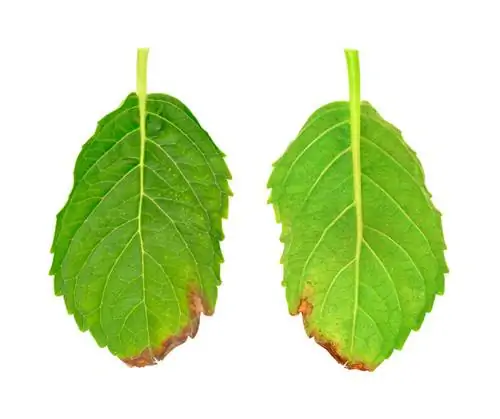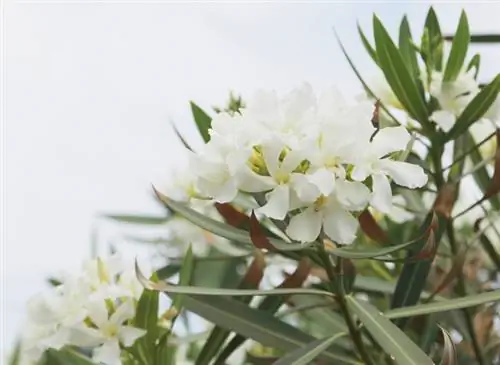- Author admin [email protected].
- Public 2023-12-16 16:46.
- Last modified 2025-01-23 11:20.
Due to their relatively robust foliage, hydrangeas are not among the plants that are particularly frequently attacked by lice. However, when the weather conditions are favorable, the animals can multiply in an invasive manner and then do not stop at the hydrangea.
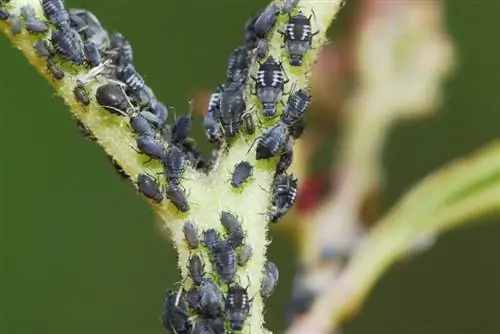
How can I protect hydrangeas from lice?
To protect hydrangeas from lice, you can spray infected plants with water, apply nettle broth or use biological sprays such as potassium soap lye and tea tree oil. You can also promote natural enemies of lice such as ladybirds and hoverfly larvae.
Lifestyle of lice
Almost all species of lice overwinter in eggs on the host plants and hatch when it starts to get warm in spring. The first generations of harmful insects reproduce asexually and can therefore produce a large number of offspring in a very short period of time. As a rule, it takes less than a week for a new, sexually mature generation of lice to grow. Later in the year, offspring capable of flying are produced, which reproduce sexually and can also infect plants further away.
The Appearance
Lice are among the most common plant pests. Most representatives of the species are only a few millimeters long and are colored green, reddish-brown or black-brown, depending on the species. Mealybugs, also known as mealybugs, reach a body length of one to twelve millimeters and are easy to identify due to their dense hair.
How to recognize the infestation
Since aphids are not as small as spider mites, for example, you can usually spot them with the naked eye. Another sign that suggests an aphid infestation is the sticky, shiny honeydew coating on the leaves and leaf deformations on the young shoots.
Remedy
If only individual plants are affected, it is often enough to spray the hydrangea with a sharp jet of water on several consecutive days. This flushes the pests from the leaves. The flightless lice are unable to crawl back onto the host plant and die.
Stinging nettle broth: environmentally friendly and effective
Undiluted nettle broth works very well against aphids. You can make these yourself very easily:
- Cut a kilo of fresh nettles into pieces.
- Place plant material in a plastic bucket. Metal containers are not suitable.
- Pour ten liters of water over the greens.
- Let the broth steep for about one to two days.
The nettle poison, which reliably kills the lice, is effective in this environmentally friendly spray.
Biological sprays
Potassium soap lye and spraying with tea tree oil have also proven effective. If you prefer commercially available insecticides, you should only choose products that are gentle on beneficial insects. Aphids have many natural enemies such as ladybirds, hoverfly larvae, predatory bugs or spiders, which help you keep the number of pests on the hydrangea under control.
Tips & Tricks
Mealybugs with their protective wax shell are a little more difficult to combat and can be very stubborn. If the hydrangea is infected with these pests, only special insecticides usually help.

